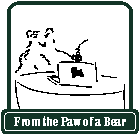HO Scale Corrugated Metal Roofing
The Frugal Scratchbuilder
I picked up this technique from an old E. L. Moore article in Model Railroader. I think it was a fireworks factory. I've adapted it a little to more modern materials.

You will need the following:
- One sheet of Evergreen corrugated styrene roofing (.040 spacing)
- masking tape
- Bristol Board - I use 100 lb vellum finish from Strathmore
- a black ballpoint pen (any color will do in a pinch but a black or an empty pen is best)
- silver acrylic craft paint
- a sharp pencil
- a brush
- white glue
- a small pair of scissors and/or an x-acto knife
- a scale ruler
- a square
Using the corrugated styrene sheet as a guide, mark your Bristol Board to approximately the width of the sheet styrene.

Then cut the Bristol board using a sharp hobby knife.

Now tape your Bristol board to the styrene sheet. Try to have as little overlap as possible. Everything under the tape is wasted. At the same time, don't skimp; you do want a good bond. Having the paper shift during the process is a royal pain in le derriere. In these photographs, I've used blue painters' tape but on further consideration I recommend real masking tape.

Make sure to fold the excess tape over the back of the styrene.

Once the paper is taped in place, run a ballpoint pen down each row of the corrugation. This takes a little practice and occasionally you will jump the track. Don't worry you can salvage little errors.

This is mindless work. Listen to something. Maybe a podcast? Soon enough you will have a full sheet of lines. I try to do a few sheets at a sitting because I really like to have material on hand at all times.

Using a square, cut off one end of the marked Bristol board to create an even edge.

Using a scale rule and a pencil, lightly mark off scale 4' x 8' sheets. 3' x 6' may be more prototypical. Suit yourself.



Once you have marked off the sheets in pencil, use a straightedge and a hobby knife to cut out long strips.


Next cut out the eight foot lengths. I use scissors. Others may prefer a knife. Soon you'll have a nice pile of corrugated 'metal' sheets.




